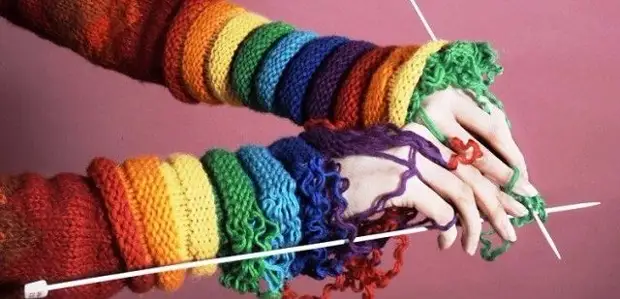
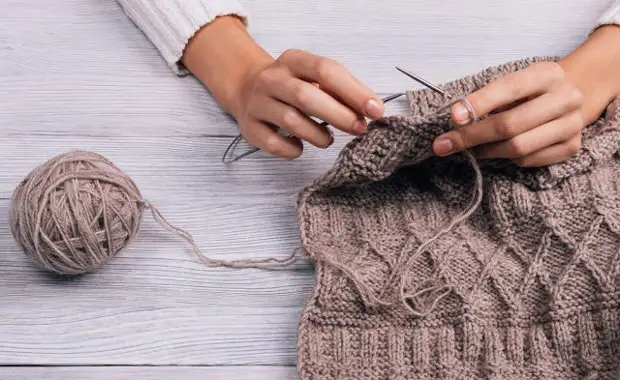
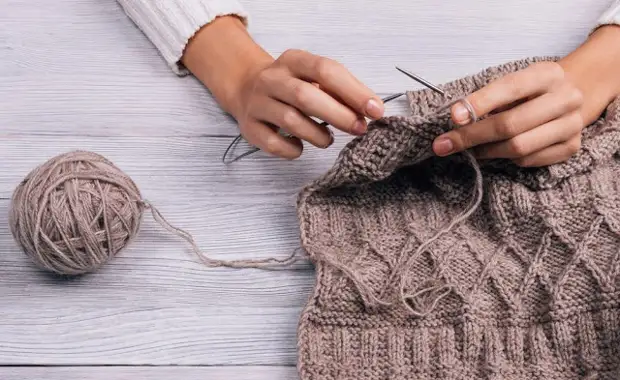
1. The knitters do not always take into account that each product should be greater than the filmed measurements (for free movement), depending on the type of figure - from 6 to 15 cm.
This concerns the chest circumference.
For example, when the marker of the breast circle, 100cm should be calculated as follows:
100: 2 = 50cm, this is the width of the back (before the accumulation of the armor).
Before it is wider: 50 + 6 = 56 cm.
At sports sweaters, the backrest width and can be the same, and add 10 cm for free movement.
2. The seat on the back is knitted in height equal to the armor on the fore, and sometimes in short.
In reality, the arm on the back should always be higher (longer),
Than on the fore, at least 1-2 ° C. And more convex (sutula) back, the more you need to pay attention when building a pattern to the appropriate increase in the height of the armor on the back (the exception is only things for kids).
3. The shoulder's bevel is sometimes the same as ahead and back.
In reality, the shoulder shoulder must be 1-2 more than on the back.
4. The neckline of the neck on the back is sometimes too narrow and small;
Therefore, it should be remembered about sufficient depth and width of the cutout
If the errors mentioned in paragraphs 2,3 or 4 were made, then
a) the shoulder seams will "run away" back;
The reason is too short pastime on the back and not the right bevel of the shoulder;
b) jacket or blouse will lag behind the neck and all the product will be with the tendency to "run away" back;
The reason is a narrow and fine cutout of the neck.
* Probably, like other lovers of knitting, I always had a question about how it is right and convenient to store the threads? In boxes, in boxes, in the suitcase, and God knows where ... when yarn and remnants are such a large amount that is going after work , It is difficult to imagine where all this is to give. Yarn should always be at hand and it is desirable that the threads of the same color and quality are in one place. It's a shame if you have to spend a lot of time looking for a desired motley or akin ...
Invented such a way for myself : I freed the shelf in the case of the cabinet and folded the threads like this: in the first row I put samples of threads (one or more balls of one color), and behind them put the second and third rows in which the remaining three hundred and color and color There are each in its transparent package). So I immediately see which colors I have yarn and how much. I take the desired yarn motok and if I know it a little, what is behind him (in the second row) in the package there are the other hundred and the clusters of the same thread. The rest of the yarn, which I have less in a large wicker basket, which I splur from newspapers especially for this purpose. There, I have all the tranches are decomposed in the flowers in colors and, without spending time in search, it is very easy to find the right one :)
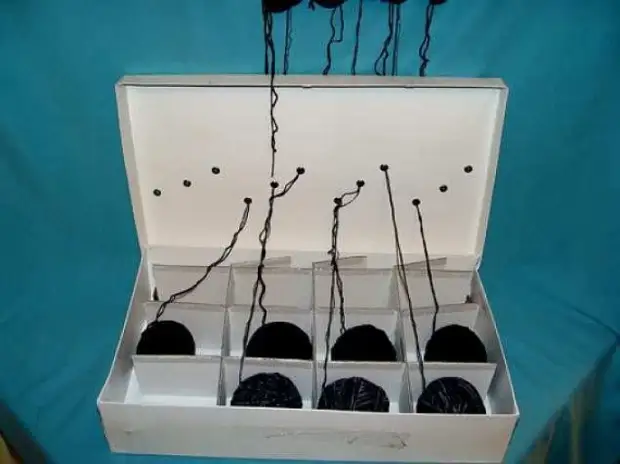
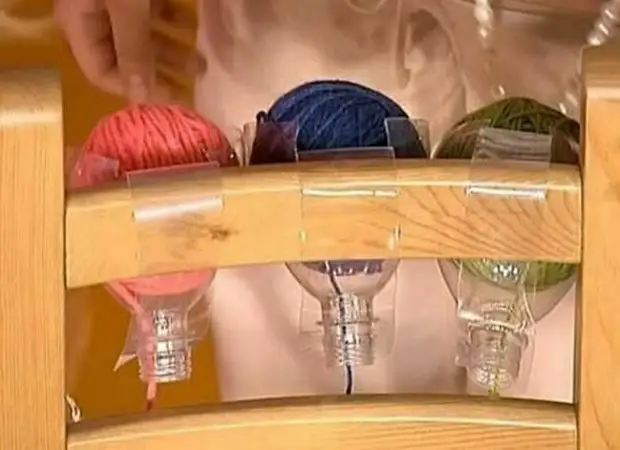
Another interesting homemade device made of plastic bottles in order for the thread with a multicolor knitting is not confused, and the girls did not run away. You just need to carefully cut out of the bottle. Form holder : Cut the bottle in half is not to the end, but leaving the entire top and the band with a width of 7-8 cm (which goes to the bottom from the middle of the bottle). We begin the plastic strip and attach it to the back of the chair, hooking the ring to the neck of the bottle.
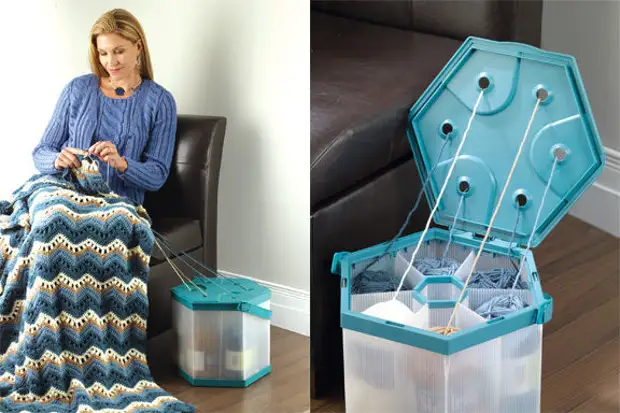
* Thus looks like a ready-made factory device for multicolor knitting. Great, right? I would not refuse this.
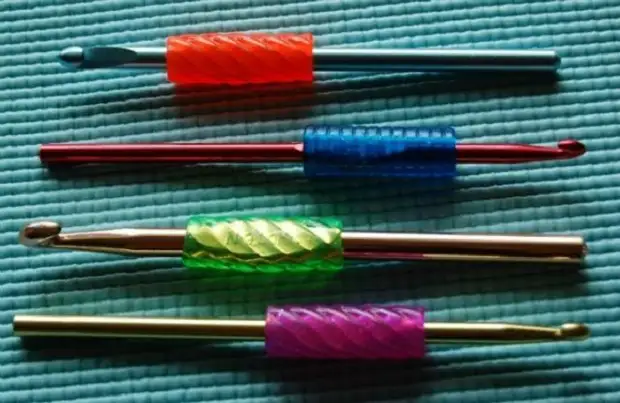
* If you save the rubber softener with an unnecessary ballpoint handle and put it on the hook, knitting such a crochet will be much more pleasant and more comfortable.
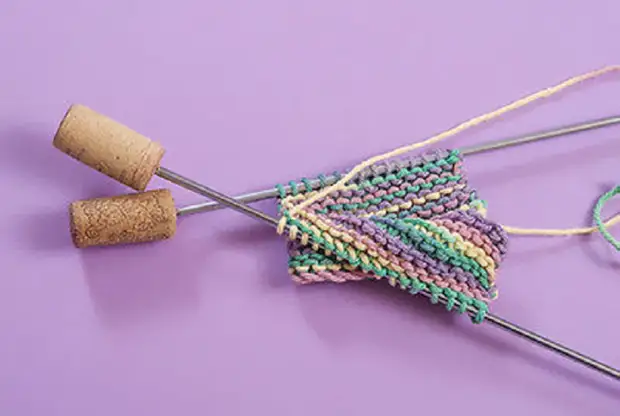
* If you need to postpone knitting and leave it for a while so that the loops do not escape, you can use pieces of elastic or plugs from bottles (just put them on the tips of the spokes).
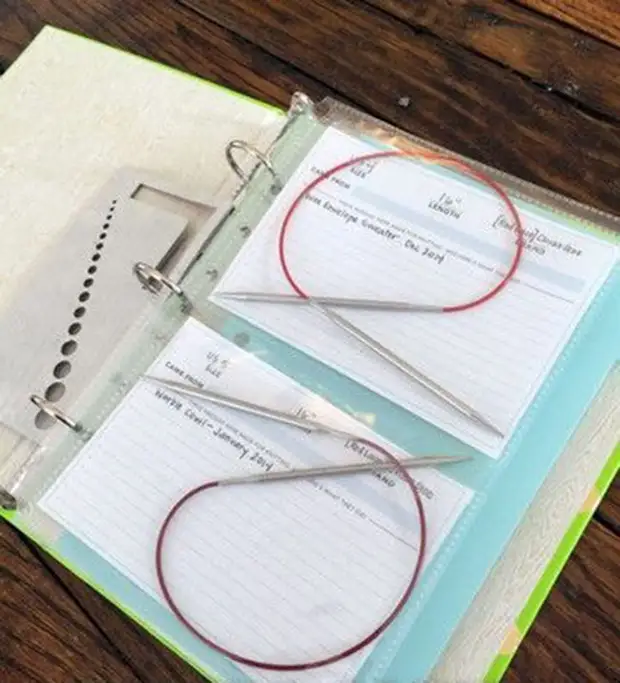
For storing the spokes on a fishing line, which are constantly spinning and confused, use the excellent idea of storing the spokes in a folder with files or in the album for photos, over which you can "put" a little and beautifully arrange them.
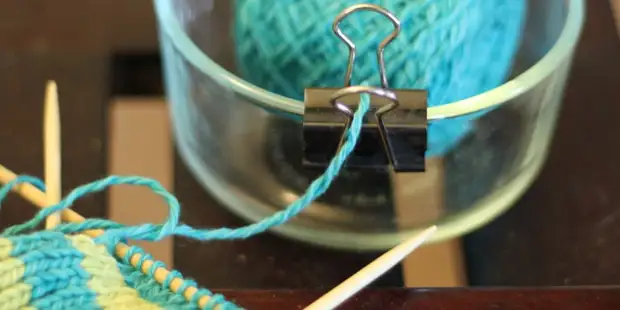
Such a small addition - the use of clips-clip will make it easier to work and make knitting a pleasant occupation. It is necessary to put a tangle in any form (a basket, a box, a bowl in which you are used to keeping a tangle during knitting) and fix the clamp on it. After that, we produce a thread through the metal's metal ear and enjoy the work, because the thread will always be on the spot and will not be able to escape.
* Now in specialized stores for sale a lot of auxiliary devices for the convenience of knitting: marking rings of different sizes and colors. They can be noted certain sections of a knitted web, for example, the center loop of the part, which is an important guideline in the process of work and will help to correctly try the item to the pattern. The transition from one row to another (with circular knitting), recess and addition and much more. To avoid errors in work, it is desirable to use rings when taking the same details, for example: sleeveless, skirt wedges and so on. Unlike English pins, they are easily removed, do not deform the loops and do not tear the threads.
* Woolen knitwear with adhesions of lamas wool, angora, mohair or fluff looks very impressive. However, it quickly formed by katovka, which are best removed by a special typewriter for peeling. High-quality yarn from wool and silk is best erased by liquid detergents. Products from such a yarn should be erased manually.
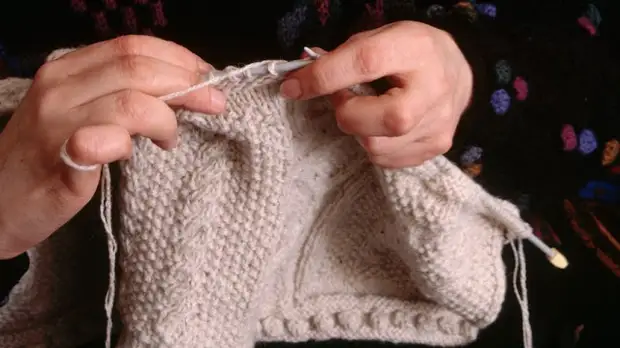
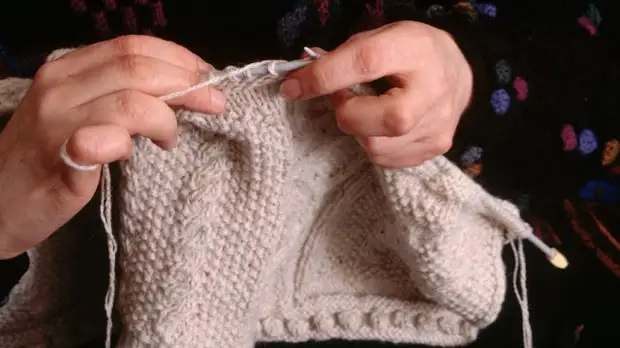
Source ➝
